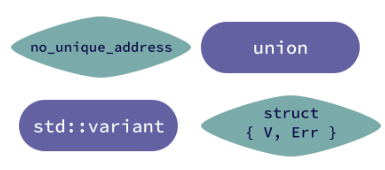 In the article about
In the article about std::expected, I introduced the type and showed some basic examples, and in this text, you’ll learn how it is implemented.
Understand Internals of std::expected
by Bartlomiej Filipek
From the article:
In short,
std::expectedshould contain two data members: the actual expected value and the unexpected error object. So, in theory, we could use a simple structure:template <class _Ty, class _Err> struct expected { /*... lots of code ... */ _Ty _Value; _Err _Unexpected; };However, there are better solutions than this. Here are some obvious issues for our “struct” approach.
- The size of the object is the sum of the Value type and the Error type (plus padding if needed).
- Two data members are “active” and initialized, which might not be possible - for example, what if the Value type has no default constructor? The Standard requires that
std::expected" holds either a value of typeTor an error of typeE` within its storage.- We’d have to guarantee that
_Tycannot be a reference type or an array type; it must be aDestructibleType.- Similarly for the
_Errtype we have to guarantee that it’s alsoDestructible, and must be a valid template argument forstd::unexpected(so not an array, non-object type, nor cv-qualified type).- Plus, we’d have to write a lot of code that creates an API for the type

Add a Comment
Comments are closed.